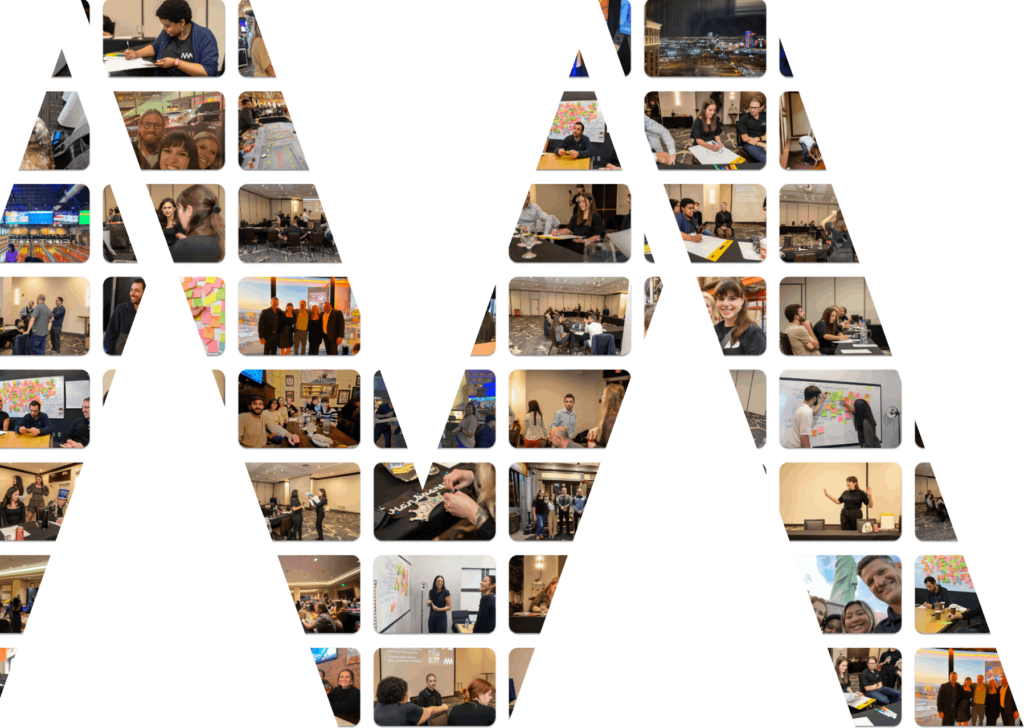With effective SEOs always straddling the line between art and science, technical skills alone will not guarantee success. I’ve seen that the true differentiators really lie in your mindset—how you approach challenges, perceive competition, and drive results despite constant algorithm changes and industry shifts. Drawing from 15 years of SEO experience and 13 in the world of legal marketing and beyond, I’ve identified five core mindsets that separate exceptional SEO professionals from the merely competent.
1. Every Competitor Above You Thinks They’re Better (They’re Not)
When I look at a list of search results that include keywords I’m vying for, I don’t just see websites. I see competitors who believe they’ve outsmarted us. That mindset fundamentally changes how I approach SEO strategy.
Every website ranking above your client represents someone who thinks they’re better and smarter than you. I’m not literally anthropomorphizing search results, but this competitive framework aligns perfectly with our core value of “Always Do Better, Always Be Better.” If a client’s keyword is stuck at position 12, that means 11 competitors are standing in your way. When you’re at position three, you’re tantalizingly close with just two more opponents to overcome.
The benefit of this mindset (at least, for me) is that it transforms abstract ranking changes into tangible victories. Each position gained isn’t just a metric improvement but proof your strategy and execution were superior to another agency’s best efforts.
This perspective creates a healthy competitive drive that fuels excellence. I genuinely don’t believe any other agency has professionals who are inherently more intelligent or more capable than our team. We have consistently proven this by winning in highly competitive markets where others fail.
That said, not every campaign clicks perfectly, even with the right strategy, scope, and leadership. Sometimes, results can be inexplicably challenging. But these situations are outliers, not the norm. Usually, when campaigns underperform, it’s because one or more fundamental factors weren’t fully addressed, such as deeply-rooted website coding or widespread minute semantic issues (both of which are probably as complex as they sound), but this never justifies being “off the hook” for results.
If this competitive mindset doesn’t resonate with you, find what does. Maybe you’re motivated by recognition from clients and colleagues when a campaign finally gains momentum. That’s perfectly valid because everyone has different motivators. But if you don’t have that fundamental drive to win for your clients and if “good enough” crosses your mind more often than “how can we dominate?” then an SEO (or any) leadership role probably isn’t your best fit.
2. Master the Proactive-Reactive Paradox
SEO demands an almost paradoxical mindset: being simultaneously proactive and patient. There are others, but for the sake of this blog, this tenant can remain the most crucial. Finding this balance is particularly challenging because our field blends objective universal fundamentals with subjective strategic choices.
Consider this scenario: You’re examining top competitors for a local keyword and notice something unexpected—a site ranking well despite omitting the geo-modifier you’ve religiously included. Do you follow established best practices or adapt to what’s clearly working in this specific market? These decisions require careful consideration to avoid reactive scrambling later.
While a lack of proactiveness would be a shortcoming of the average SEO, certain situations warrant strategic patience. After major Google updates or the launch of a new website, sometimes the wisest approach is waiting to see where rankings settle before making additional changes. Impulsive adjustments during these periods can undermine your overall strategy. There’s a certain elegance to staggering work strategically over time rather than implementing everything at once.
True proactivity in SEO means staying ahead of industry trends. This requires constant learning through webinars, podcasts, communities, and industry publications. What makes this especially challenging is the rapid obsolescence of SEO knowledge. Publications like Search Engine Journal and Search Engine Land frequently contain information that becomes outdated within 6-12 months. We must be proactive about being proactive!
This mindset extends to learning from setbacks. When we lose a client, we naturally tend to move on quickly and focus elsewhere. Instead, we must proactively learn from these losses, apply those lessons to remaining clients, and ensure we never repeat the same mistakes.
3. Always Do Better, Always Be Better
Professional and personal development are deeply intertwined in successful SEO careers. The best SEO professionals constantly push beyond their comfort zones, taking on increasingly challenging projects that drive continuous growth.
For instance, working exclusively with dental clients might seem easier and potentially more desirable than tackling the hyper-competitive legal space. But deliberately choosing the more difficult path prevents stagnation and regression in your professional development.
While SEO work never truly ends, achieving milestones provides important moments to reflect before proceeding. This continuous improvement mindset applies not just to client campaigns but also to proactively addressing potential issues and developing company-wide opportunities.
Unlike other departments with clear metrics like client satisfaction scores or sales quotas, SEO goals can seem more ambiguous. However, they absolutely exist fulfilling tasks punctually, executing plans thoroughly, growing keyword rankings, driving leading indicators (traffic, impressions) that eventually improve lagging indicators (qualified leads), and adapting to industry changes.
Keywords remain important, but they’re just one part of a much larger picture. Success means maintaining positive trends while consistently staying ahead of competitors by understanding how their strategies evolve. Even after reaching top positions for competitive keywords, your work isn’t done. Competitors will analyze your approach, raise the stakes, and work tirelessly to dethrone you. Always be prepared for the next challenge.
This mindset requires proper planning, proactive delegation, and preparation for both scheduled commitments and unexpected requests. While advancement shouldn’t necessarily mean working longer hours, it does mean tackling increasingly nuanced problems that keep you outside your comfort zone.
4. Control What You Can, Accept What You Can’t
One of the most frustrating aspects of SEO is the extended lag time between action and result. Unlike paid media and channels that provide instant visibility, where changes yield almost immediate data, SEO impacts often manifest weeks or months later. Most of our metrics are lagging indicators, making the connection between specific actions and outcomes particularly challenging to demonstrate.
Only in limited scenarios, like Conversion Rate Optimization (CRO), can we measure differences within days. Even then, it can only be done with sufficient traffic to validate results in a compressed timeframe.
While we can’t control Google’s algorithm or the competitive landscape, we absolutely control how we respond to data and when we take action. Human nature tempts us to attribute positive trends to our own brilliant strategies while dismissing negative ones as external factors or temporary fluctuations that don’t warrant immediate attention. Recognizing and overcoming this cognitive bias is essential.
When facing complex issues or ambitious projects, the paralysis of overthinking can be debilitating. The solution isn’t necessarily immediate action on everything, but at minimum, visualizing concrete first steps. Even when we can’t immediately execute, we can capture what crosses our mind and process it into clear, actionable steps using methodologies like Getting Things Done (GTD).
Data transparency makes this approach both powerful and challenging. As Daniel Kahneman wisely observed, “What you see is all there is.” Once data presents itself, you can’t unsee or ignore it. You can contextualize it within a larger narrative, but its existence demands acknowledgment and, often, action.
This mindset helps us ask deeper questions throughout a campaign’s lifecycle:
- What’s a realistic timeline for ranking competitively for this keyword given its current position? Should we proactively communicate this to the client?
- Is this keyword worth pursuing if its difficulty is continuously increasing?
- Is search volume for this term increasing or decreasing? Is this a “mainstay” keyword that will remain relevant for years, or could external factors threaten its viability?
- How might industry disruptions create both threats and opportunities in our keyword strategy?
These approaches won’t prepare us for everything. They’re just one facet of pull marketing, which engages users actively seeking information. But they establish a framework for controlling what we can while strategically planning for what we can’t.
5. First Impressions Are Everything (Even in SEO)
Regardless of how well a campaign performs technically, poor optics can undermine client confidence. Remember those apocryphal stories about rock stars demanding bowls of M&Ms with specific colors removed? The reasoning wasn’t prima donna behavior but quality control. If that simple detail was missed, what critical technical specifications might also be overlooked?
The same principle applies to SEO. Small mistakes or overlooked issues, especially in the early months of an engagement, can drastically erode client trust. The onboarding period is absolutely critical not just for implementing sound strategy but also for consistently demonstrating professionalism and expertise that reassures clients they made the right decision.
Switching marketing partners is incredibly stressful for business owners, even when dissatisfied with their current provider. Every interaction, deliverable, and communication becomes a data point they use to gauge their decision. That’s precisely why we have to approach onboarding with an all-hands approach, ensuring our best talent is represented across the board. The first content deliverables, typically a blog and a page, must be masterfully crafted and presented as a showcase of our capabilities.
This period isn’t just about maintaining a relationship; it’s about firmly establishing that the client made the best possible decision for their business. Identify issues their previous agency missed, propose unique solutions, and secure buy-in for your approach. Many previous SEO efforts are embarrassingly inadequate, as we’ve seen in the dental space (legal is usually relatively intact); this is an opportunity to position yourself as the hero that will finally deliver what others promised.
Remember that many clients expect their marketing partner to be omniscient about every aspect of their business. While this isn’t realistic, we can leverage tools and alerts to monitor everything from social media mentions to Google Business Profile changes to significant keyword fluctuations. Providing comprehensive data without filtering information to serve our own narrative builds incredible trust.
Additionally, clients often view developments in adjacent fields like PPC and Local Service Ads as falling under our purview. While we maintain clear boundaries around our scope, being a true marketing partner means staying informed about complementary services that might benefit them, from paid channels to intake solutions and chat implementations.
The Mindset That Matters Most – An Inherent Edge That Can’t Always Be Learned
If there’s one overarching mindset that encompasses all others, it’s genuine care. In my experience, the worst professional situation is working for an organization that doesn’t truly care about results or following through with what they said they would do. When clients leave because they feel we didn’t fulfill our promises, it’s personally devastating, especially when their expectations were reasonable and acknowledged from the beginning.
The pain in a client’s eyes when they describe their previous disappointing agency experiences should motivate us to be different. We constantly hear these disgruntled stories from clients who’ve been burned elsewhere. They come to us hoping—sometimes desperately—for a team to finally show them what a properly executed SEO campaign can achieve.
We’ve delivered those transformative results countless times. The question we must continually ask ourselves is: “What’s holding us back from doing this every single time?” When analyzing underperforming campaigns, identifying concrete needs like an additional link-building budget represents progress. There’s never room for preemptive resignation based on unfounded beliefs that certain situations are unsolvable.
The mindsets outlined above aren’t just philosophical concepts but practical frameworks that drive consistent excellence in SEO. By embracing competition, balancing proactivity with patience, committing to continuous improvement, controlling what you can, and obsessing over client impressions, you’ll develop the psychological foundation for extraordinary results in this challenging field.
Why Choose Market My Market?
If you’re looking for a partner that knows how to win in today’s SEO landscape, look no further. Market My Market brings years of hands-on experience navigating both the technical and strategic sides of search. We understand that SEO is as much about mindset as it is about skill. We focus on measurable growth, constant learning, and thoughtful adaptation to industry changes that others often overlook.
Our approach is rooted in results, communication, and transparency. We don’t just track rankings. We interpret every data point to improve your outcomes. With real-time reporting, weekly updates, and tailored 30-60-90 day strategies, you’re always in the loop. Let’s work together to create a meaningful, lasting impact for your brand. Call us at (800) 997-7336 or use our contact form.

The ongoing digital revolution is transforming the way that all businesses interact with clients and customers. Consumers rely heavily on digital channels for researching products and services and expect to make buying choices with the swipe of a finger. For organizations that want to remain competitive, having a defined digital marketing strategy and execution plan is essential for successful outcomes. With a demonstrated history of creating and implementing strategic digital marketing initiatives that drive growth, I am committed to delivering real, measurable results for my clients.


